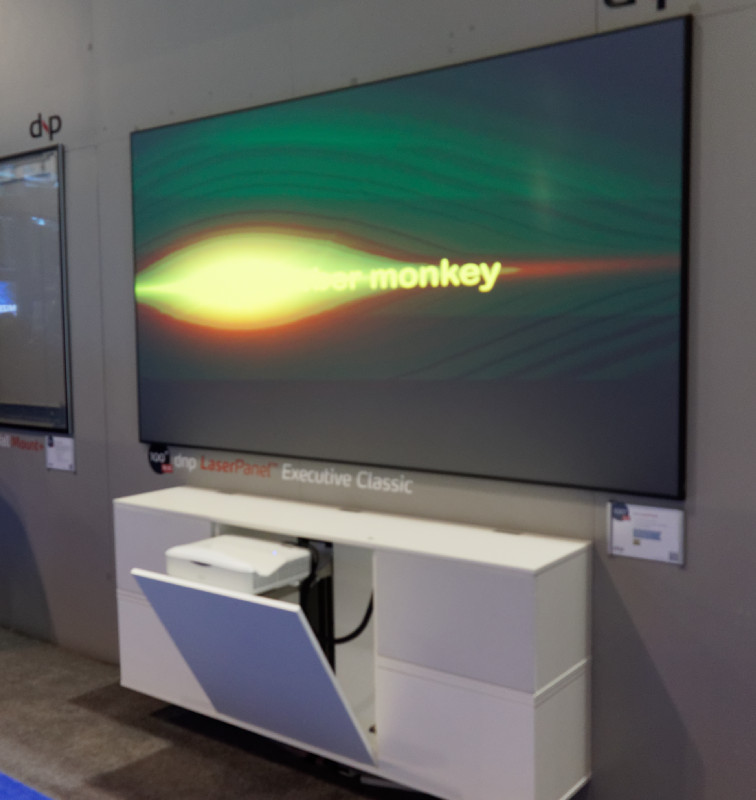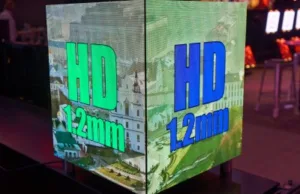Digital Projection was showing the range of projectors that it has with WUXGA from 5,000 to 27,000 Ansi lumens but had nothing completely new at the show.
A new initiative from Digital Projection was the introduction of direct small pitch LED displays in 0.9mm and 1.2mm pitch, exploiting the supply chain available through its parent company, Delta Electronics. The cabinets are designed with a 16:9 format and are front maintainable. The controller is from Novastar and the firm told us that it planned to win business because of its ability to tune performance to match the applications it knows well.
DNP was showing its latest screen materials including its 100″ and 120″ 16:9 and 16:10 screens. The company was also showing the ‘LaserPanel Business Classic’ system. This consists of a DNP-branded UST projector that fits into a custom cabinet which is designed to be wall mounted. When the cabinet is opened (there are manual and motorised versions), the projector is in the optimum position to display onto an optimised screen which rejects ambient light. The complete system costs $6,500. Althpugh not technically clever, we thought that the combination is a good marketing idea and could be attractive to business users.
 DNP’s projector is unexceptional but this complete UST system is neat. Image:Meko
DNP’s projector is unexceptional but this complete UST system is neat. Image:Meko
Flat Frog was in a positive mood – it has had a lot of design wins for its optical touch systems over the last year and at the show we spotted that LG has started to use it. A key reason for the wins, the company told us, is the good quality of the pen input system. One of the applications that is now supported on the hardware is the Polycom Pano system. The company told us that it also now has a plug-in for the Intel Unite platform.
The HDBaseT Alliance was at the event to promote its HDBaseT/IP system which takes the HDBaseT protocol and signals (excluding power, of course) and encapsulates them into a packet stream that can be used over commodity 10GB ethernet switches and infrastructure. As well as video at up to UltraHD at 60 fps (4:2:0) or 30 fps with 4:4:4, A/V control, data and USB signals are all converted. The system uses a conversion box at each end to pack and unpack the data stream and latency is said to be measured in microseconds. The group is developing technology to support UltraHD with 60fps at 4:4:4 using a visually lossless light compression scheme such as VESA DisplayStream. It is also developing versions with some compression that can run at 5Gbps/2.5Gbps and even 1Gbps).
Hisense was on the Almo booth as it has started to address the B2B market in the US and will start to really enter the market in 2018.

